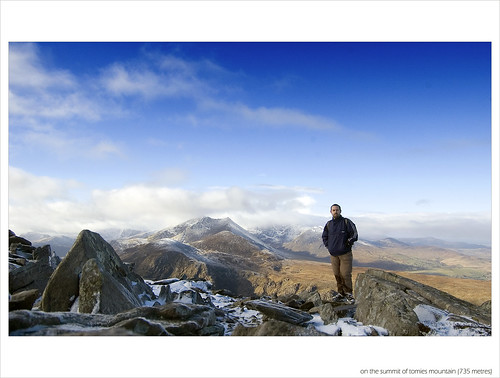
Date: 16th Feb 2010
Purple Mountain
Classification: Dillon, Hewitt, Marilyn
Dillon Count: 25
Tomies South
Classification: Dillon, Hewitt
Dillon Count: 26
Shehy Mountain
Classification: Dillon, Hewitt
Dillon Count: 27
Tomies Mountain
Classification: Dillon, Hewitt
Dillon Count: 28
Cnoc na Bhraca
Classification: Dillon, Hewitt
Dillon Count: 29
Cnoc an dTarbh
Classification: Dillon, Hewitt
Dillon Count: 30
Clear blue skies, splendid sunshine, a gentle cool breeze and a fresh sprinking of snow.. there are some days that are made for walking and with a massive chunk of luck, I was treated to one of these on the one full day I had spare on a trip to Kerry. I had made provisional plans to tick off a few of the easier summits in the area with Boughil, Knocklomena and Knockbrack looking the most likely but these plans were soon put aside when I awoke to the unexpected snow cover.
At the peak of the summer holiday season, the gap of Dunloe is heaving with people and it's long and winding road is the sole property of the infamous jaunties as they hoard the masses up and down the gap on horse-drawn carraiges for the princly sum of thirty quid. At 8am on a winters morning, there wasn't a single person in sight and for a short while, I was the king of the gap as I took the opportunity to drive to it's head. Having jogged the gap a couple of days previous and looked up longingly at the peaks on either side, I couldn't believe my luck to see the same mountains now covered in snow and bathing in the early morning sunshine.
After a short deliberation, I ditched my plans to drive to Barfinny Lough and tackle the peaks in that area instead deciding to park at the head of the gap and head for the summit of Purple Mountain. The key to Purple is to find the fence that runs from the road up to the amazingly picturesque Glas Lough, a perched lake at a bearing of 40 degrees from the head. As you climb, the gap disappears from view and the large impressive bulk of the Eastern Reeks begin to dominate the landsacpe.
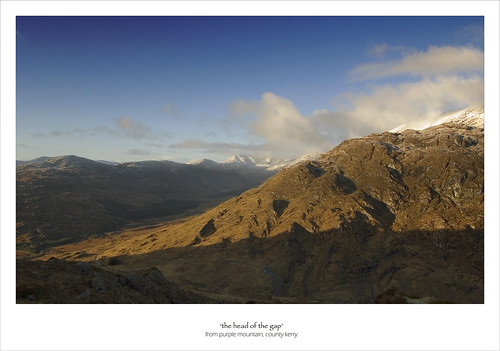
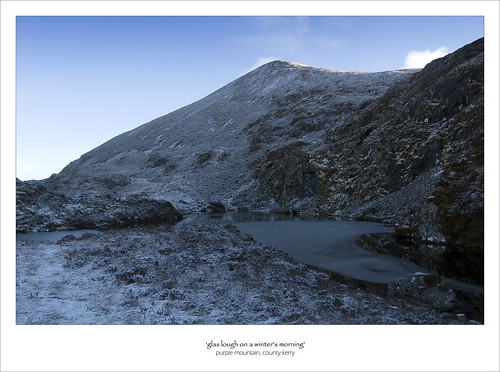
From the lake, a track can be followed up the higher slopes of Purple. The track becomes quite vague in places but if you can stick with it, the going is much easier than wading through the energy sapping heather which gives the mountain it's name. The heather gives way to scree as you move further up the mountain and a cairn marks the first top which has a spot height of 793 metres.

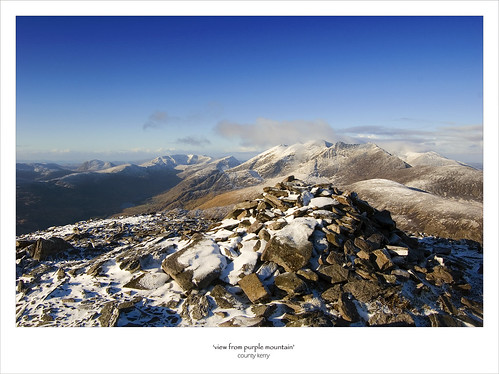
This point gives amazing views across to the Eastern Reeks and from here, it's only a short walk to the summit proper of Purple. The summit is marked by a number of cairns, the largest of which would seem to be at the summit proper. Looking across to the Reeks from this viewing point, you really do feel on top of the world as the ground quickly falls away down to the gap. This top marked another minor milestone being my 25th 'Dillon' to date.

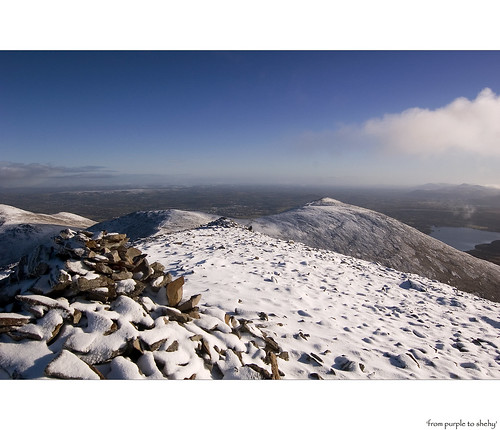

I had heard the climb up Purple described as hellish but I was pleasantly suprised to find it pretty straight-forward. Maybe my recent jogging had begun to pay off or maybe the mountain poses a far greater challenge come summer when the heather nestling on it's slopes comes into full bloom. In any case, the hard work climbing Purple pays off as the summit proves to be something of a peak-baggers delight. From Purple, I had ticked off another couple of tops in what can have been no more that a quarter of an hour. A short walk from Purple led to Tomies South (or Purple North-East Top) and from there, another short stroll through the deepest section of snow took me to the summit of Shehy Mountain.
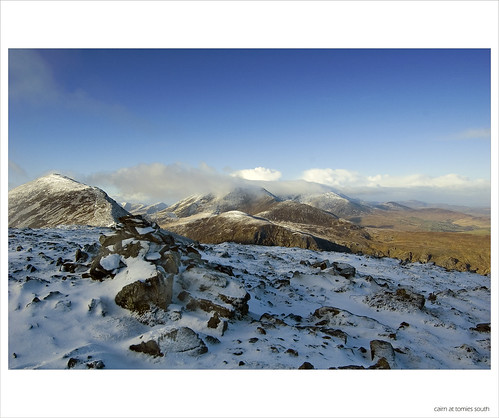

Shehy offers contrasting views to the other tops on the Purple Range. While the reeks dominate the views from elsewhere on the range, Shehy looks down on Lough Leane which is speckled with a handful of small islands and on this morning was glimmering a vibrant shade of blue in the early winter sunlight. The names of the islands on the Lough suggest that each has a story to tell.. Brown Islan and Innisfallen sit beside the intriguingly named Lamb and Heron Islands. Beyond the lake lies Killarney town sitting in a bowl surrounded to the east and north-east by a line of mountains with the eye leading from Magnerton onto Stoompa, Crohane and onto the iconic Paps which I had visited previously, each mountain looking very much like a cup-cake neatly powdered by an icing of snow.

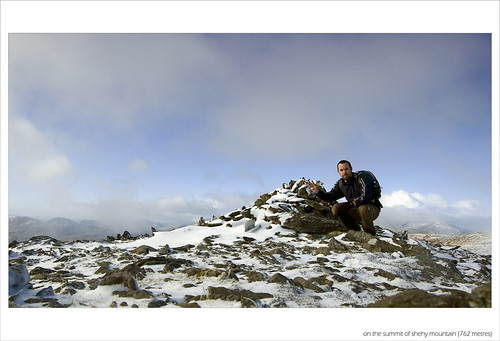
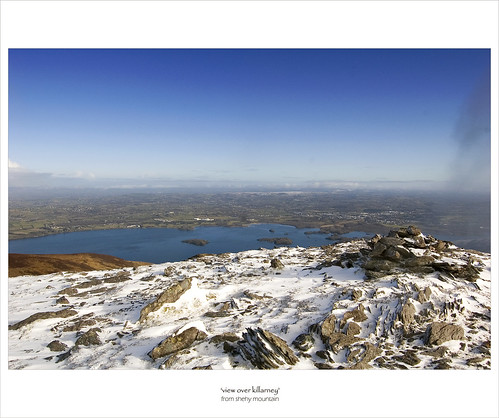
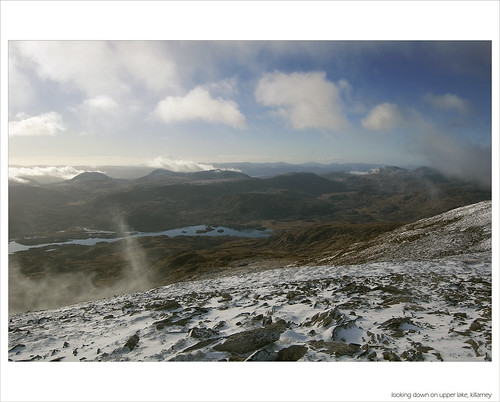
From Shehy, I retraced my steps back to Tomies South from where a steep descent followed by a gentle climb led quickly to the fourth top of the day at Tomies Mountain. Tomies is topped by a large cairn and again offers really exceptional views across to the Eastern Reeks. The highest point of the mountain is marked as 'An Cathair' on some maps. Indeed, there seems to be some confusion about the names of a couple of tops along the range.
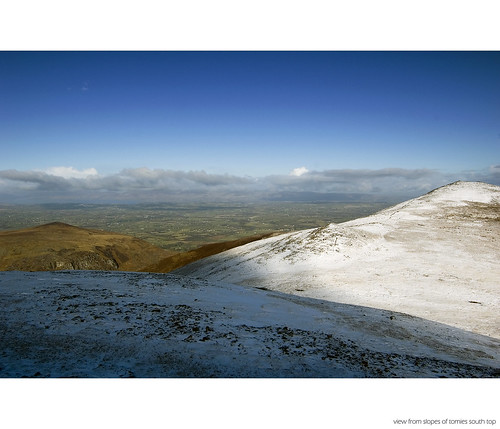
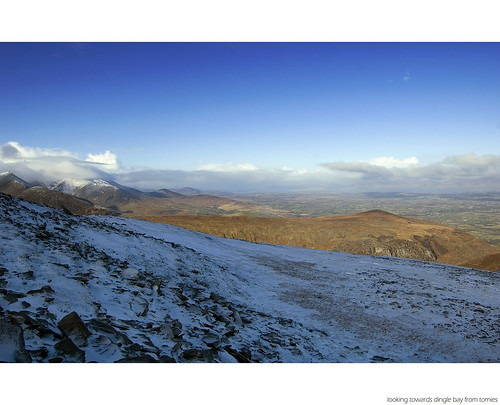

I had considered retracing my steps back to the head of the gap but that would have involved a climb back up the steep slopes of Tomies South so I continued along the direction in which I was following before veering North at the cairn-topped mound below Tomies. The fun ends at this point as the descent quickly becomes tough going through knee deep heather. A good navigational aid is to aim for the brightly coloured green shed as this marks the start of a track back down to the road. I met a friendly couple of walkers on my descent of Tomies and the conversation there formed my plan for the second part of the walk. I had intended walking back up the gap to my car but with the day still young, I decided to take in some of the Eastern Reeks. The woman walker I met suggested taking the 'zig-zag' path up to Strikeen hill and following the plateau across to the reeks.
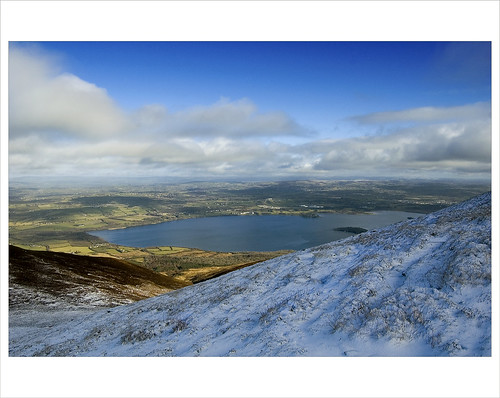
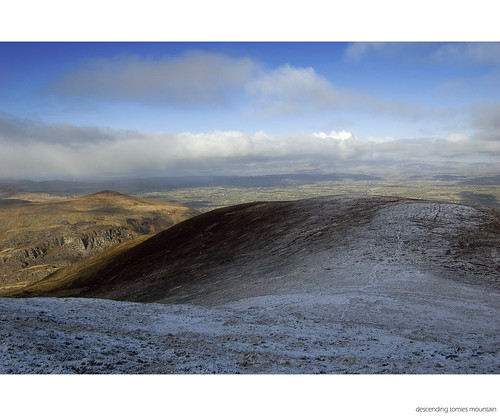
The trudge down Tomies proved to be tiring and by the time I had passed an empty Kate Kearneys and reached the bottom of the Turf Road, a slight cramp in my legs placed doubts in my mind about tackling the Eastern Reeks. A short break for a snack and a drink rectified this and the zig-zags provided a gentle way of ascending to the plateau as well as providing great views down to the gap along the way.
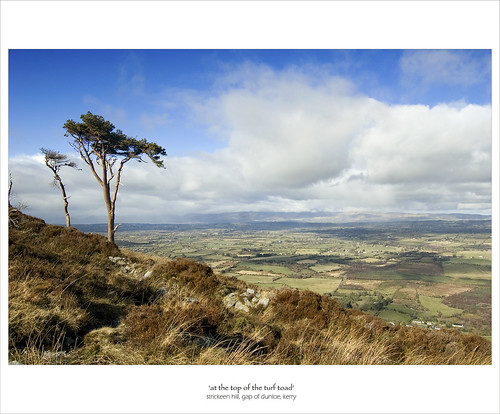
My main concern had been the blanket bog at the foot of Strikeen which gave the turf road it's name. The road gave access for locals to cut turf for use in their homes and although some cuttings could still be seen, the ground wasn't anywhere near as heavy as I had anticipated. The elevated plateau across to the reeks really is a special place with the mountains rising majestically above the flat plain to the West.
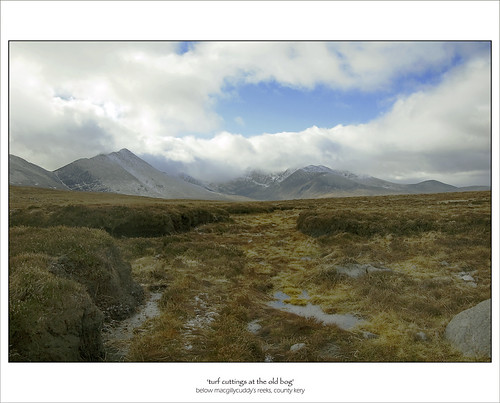
The walk across the bog will eventually bring you to the foot of Cnoc an Bhraca. This is the starting point of the famous Reeks Ridge walk and you can avail of the distinct path to take you all the way to the top of the mountain which is marked with a large cairn. The snow cover meant that I wandered from the path on a couple of times but the climb is quite easy going and the small exertion is well worth it for the stunning view across to the Eastern ridge. The view leads the eye firstly to the grotto on Cruach Mor and then on along the razor-sharp edge leading to the impressive Big Gun.
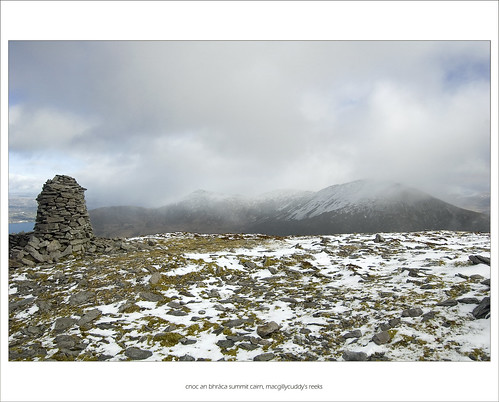
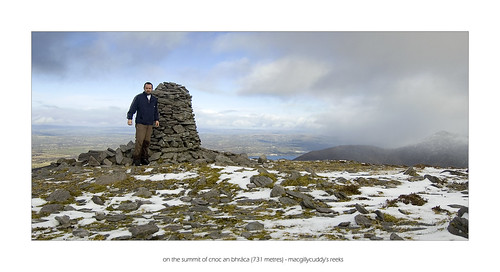
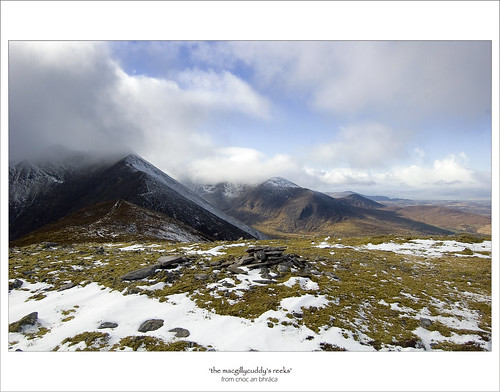

From Cnoc an Bhraca, it was a very short crossing to the sixth and final top of the day. Cnoc na dTarbh translates as 'hill of the bulls' and the only logical explaination I could get for the name was that it was named after one particular rock formation among the many on its summit which resembled the horns of a bull when viewed from a certain angle.
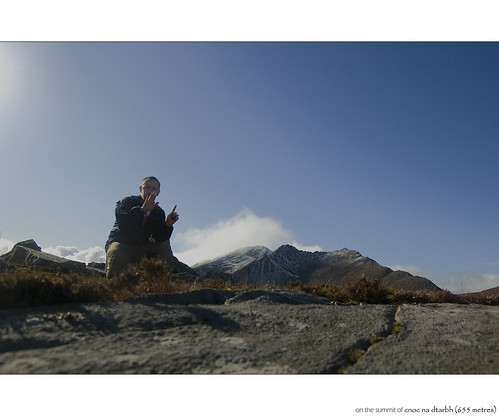
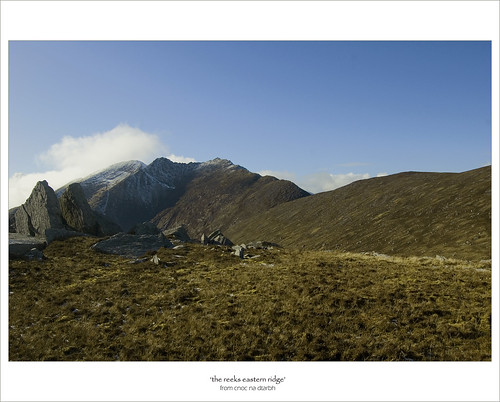
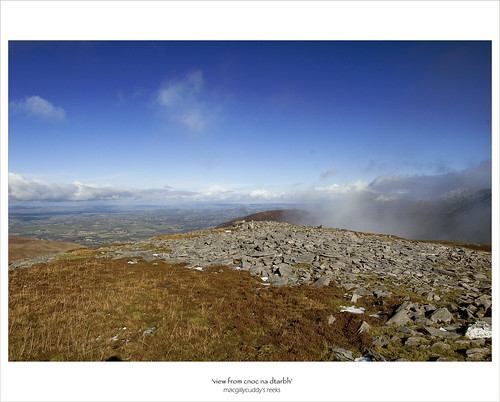
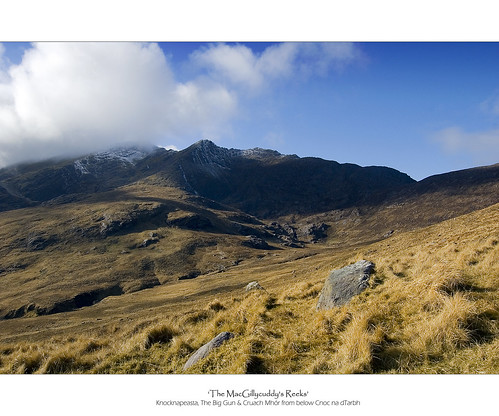
Taking advice from the woman I had met earlier on the slopes of Tomies, I descended Cnoc nd dTarbh by keeping on the Black Valley side of Drishana to avoid the worst of the ground and my tired legs were very glad of the easy going. In fact, I strayed a bit too far towards the Black Valley side and came out on the road quite close to the road juntion between the gap road and the Black Valley road. Looking down on the Black Valley, it is easy to see where it gets it's name.
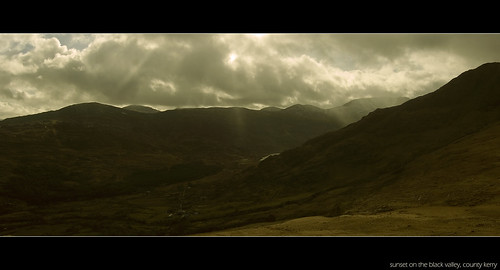
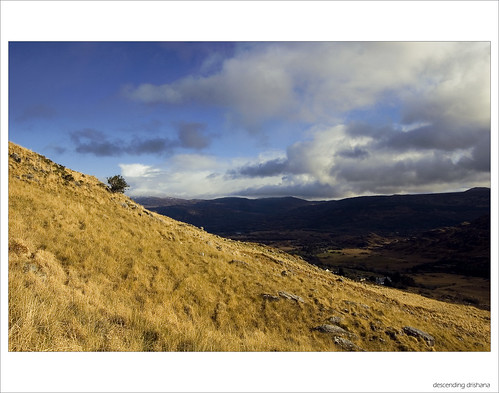
Surrounded by mountains, the valley lay in shadow while the bright sun lit up the surrounding landscape. Due to it's orientation and the positioning of the mountains around it, the valley manages to avoid direct sunlight for a large proportion of the day. A walk of around 1km took me back to the welcome sight of my car feeling exhausted but delighted with the 6 Dillons I'd bagged and a very enjoyable days walking.

nice report, i walked the entire length of the reeks, its an epic walk. I too have set myself a target of climbing 50 new mountains this year, if your interested i have my own blog here; onefootintheclouds.blogspot.com.
ReplyDeleteI found your blog via your flickr photos, i have a peek at your pics every now and again, keep up the great work and best of luck completing the 'Dillons'
Cheer Stuart. Haven't updated the blog in some time so only saw your comment now. Great write-up on the Mournes - hoping to do the Mourne Wall next week myself.
ReplyDelete